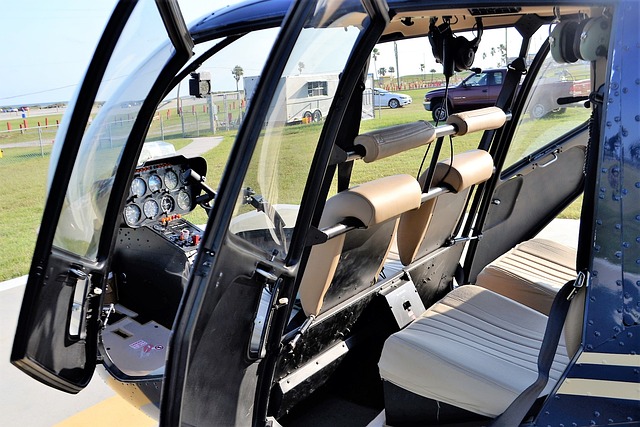The freshly minted CFI was grumpy because he interviewed at a local flight school but did not get the job. He said he was turned down because his logbook lacked diversity. He went on to rant about the flight school being “woke,” which sent a look around the FBO, and if we had been in a cartoon, a question mark would have appeared over my head. I knew the instructor he interviewed with—I’d flown with him a few times—and the school, and his statement didn’t make sense.
The next time I saw the interviewing instructor, I asked him about it. The interviewing CFI, who had more than 30 years in the industry, laughed at the applicant’s interpretation. “Lack of diversity” in the logbook meant the applicant, who had gone to an accelerated program, had only flown three models of aircraft to get his 300 hours: a Cessna 150 and 172—and his most recent time encompassed 15 hours in a Diamond DA42 TwinStar.
“We look for CFIs with more diverse experience,” the interviewing CFI explained. The flight school had a large fleet made up of Pipers, Diamonds, Cessnas, and Cirruses. He went on to tell me that the school looked for instructors who had flown multiple makes and models, as they were often better teachers because they had a more diverse educational experience.
I agreed with this wholeheartedly. I advise my learners to fly as many different aircraft as they can—and by “fly them,” I mean make sure the time is legally loggable. I stress this, because I have known PYTs (pretty young things) who got a ride in the cockpit of an aircraft (often a twin or high-performance design) and were surprised to learn they could not log it. When in doubt, check FAR 61.51 for loggability.
Start your search for aircraft diversity by finding an FBO to rent from. Or, survey several FBOs in your area. While it won’t be cheap, it is an investment in your future. You may also want to check out local flying clubs, especially type clubs, as they often have very accomplished flight instructors that specialize in training in that make and model.
When you go shopping for an FBO or flight school, note the size and makeup of the fleet. Look for a fleet that is a mixture of low-wing and high-wing designs, and be ready to do transition training as required by the owner. Expect to complete an open-book test on aircraft systems and at least an hourlong flight.
Make sure the aircraft you have your eye on are airworthy, as there are flight schools with hangar and ramp queens—often twins—that try to pass them off as rentable, saying they are temporarily down for maintenance when actually some have been down for months awaiting a part. The client doesn’t find out until they have put thousands of nonrefundable money down on account. Don’t be this person.
During the transition training, make a list of the differences between the aircraft you have previously flown and what you’re flying now. This helps guard against negative transference, when you do the right thing for aircraft A, but you are flying aircraft B, and that makes it the wrong thing. Note the differences that can bite you. For example, when flying a low-wing aircraft, you will typically have to switch fuel tanks during the flight. This often involves using a timer and an electrically activated fuel pump. How often you switch tanks depends on fuel burn—perhaps every 20 minutes—and verifying the fuel selector is on the fullest tank before landing. In a high-wing aircraft, the checklist may indicate the fuel selector should be placed on “both” during takeoff and landing and can be moved to one tank or the other during cruise flight.
Note the Panel
Ask what kind of instrument panels the aircraft have. Do they have all glass? Round dial or analog gauges? A mixture of the two? Get experience on both, because this will make you a more versatile pilot and give you more career options.
Ten years ago, flight schools—especially those at the college and university level—crowed about their all-glass, ultramodern aircraft. The pilots who trained at the smaller FBOs with the round-dial “steam” gauges often wondered if they were missing out on something by not having glass experience, only to learn when they got to the airlines that the glass cockpit in the jet or turboprop was different from those found in the training aircraft. In addition, the ones who built their time at smaller Part 135 outfits noted they flew older equipment, which was often round dial, so the time at the smaller flight school behind an analog panel proved beneficial.
I have been teaching the Garmin G1000 since 2006, but the bulk of my time is using an analog-centric panel. I submit that learning the “round dials” first makes transitioning to glass easier, as the systems often make more sense on analog gauges. Learning to fly on round dials is a lot like learning to drive a stick-shift automobile. Yes, it requires more focus to learn and thought to do safely, but it gives you an extra skill set to draw upon.
With aviation experience, quality—in addition to quantity—is key. You may have 1,500 hours, but 90 percent of it is in Cessna 172s and laps in the pattern at the same nontowered airport. Meanwhile, another pilot applying for the same job has the same hours but has flown at both towered and nontowered airports and multiple aircraft types. Guess who looks better on paper to the recruiter? Good guess. You will find as you diversify your aviation experiences that your career opportunities will be diverse as well.


